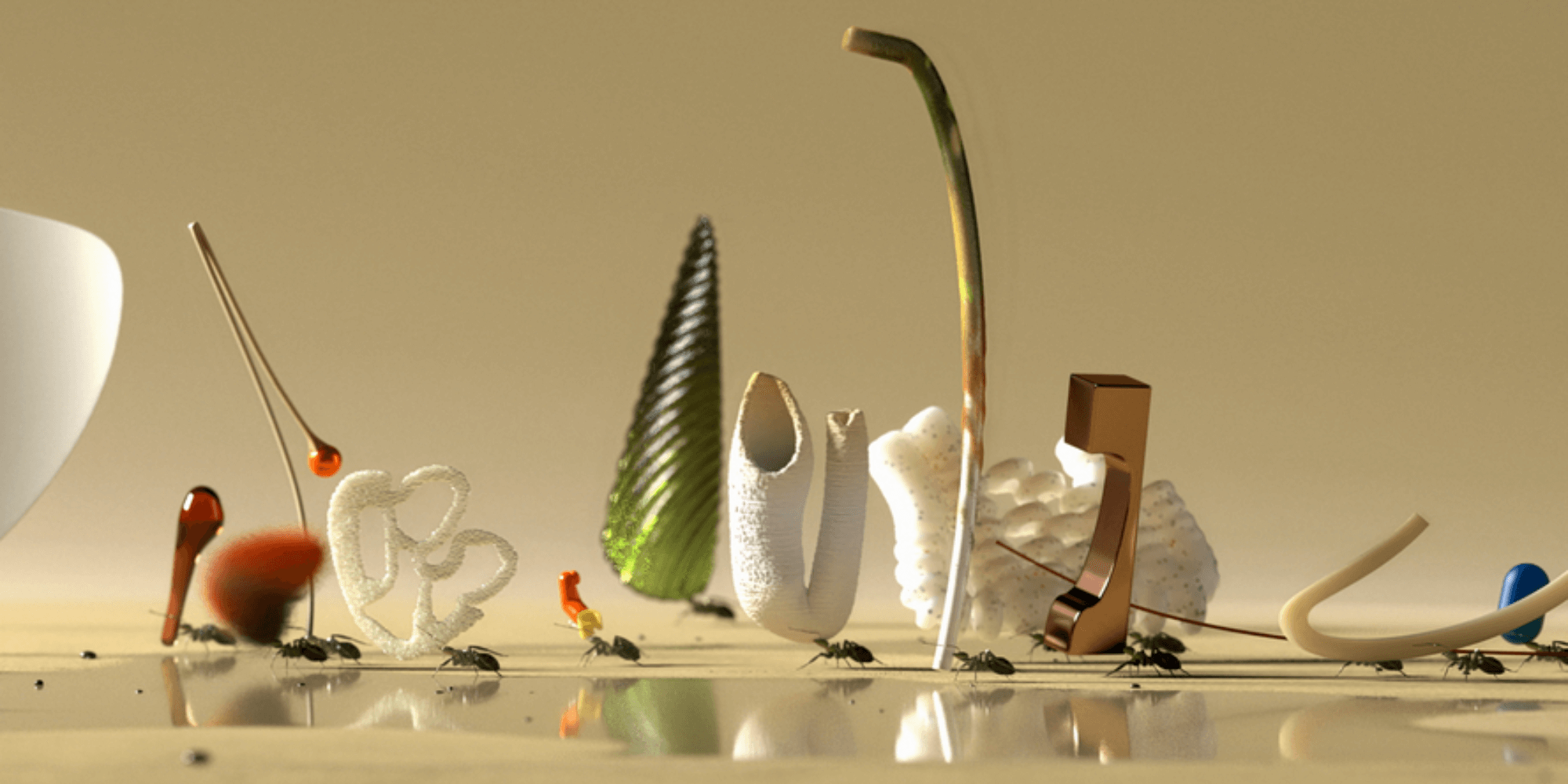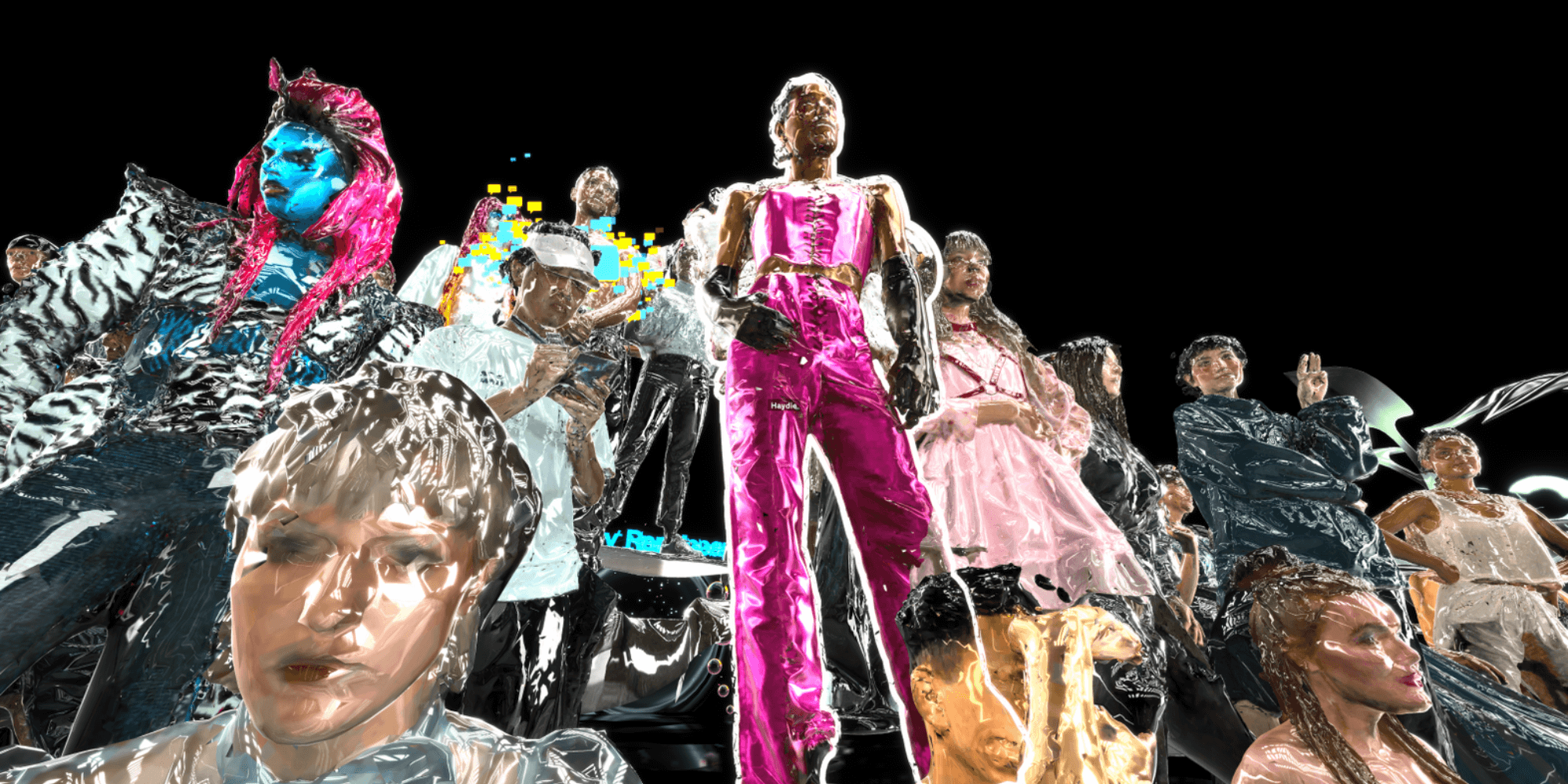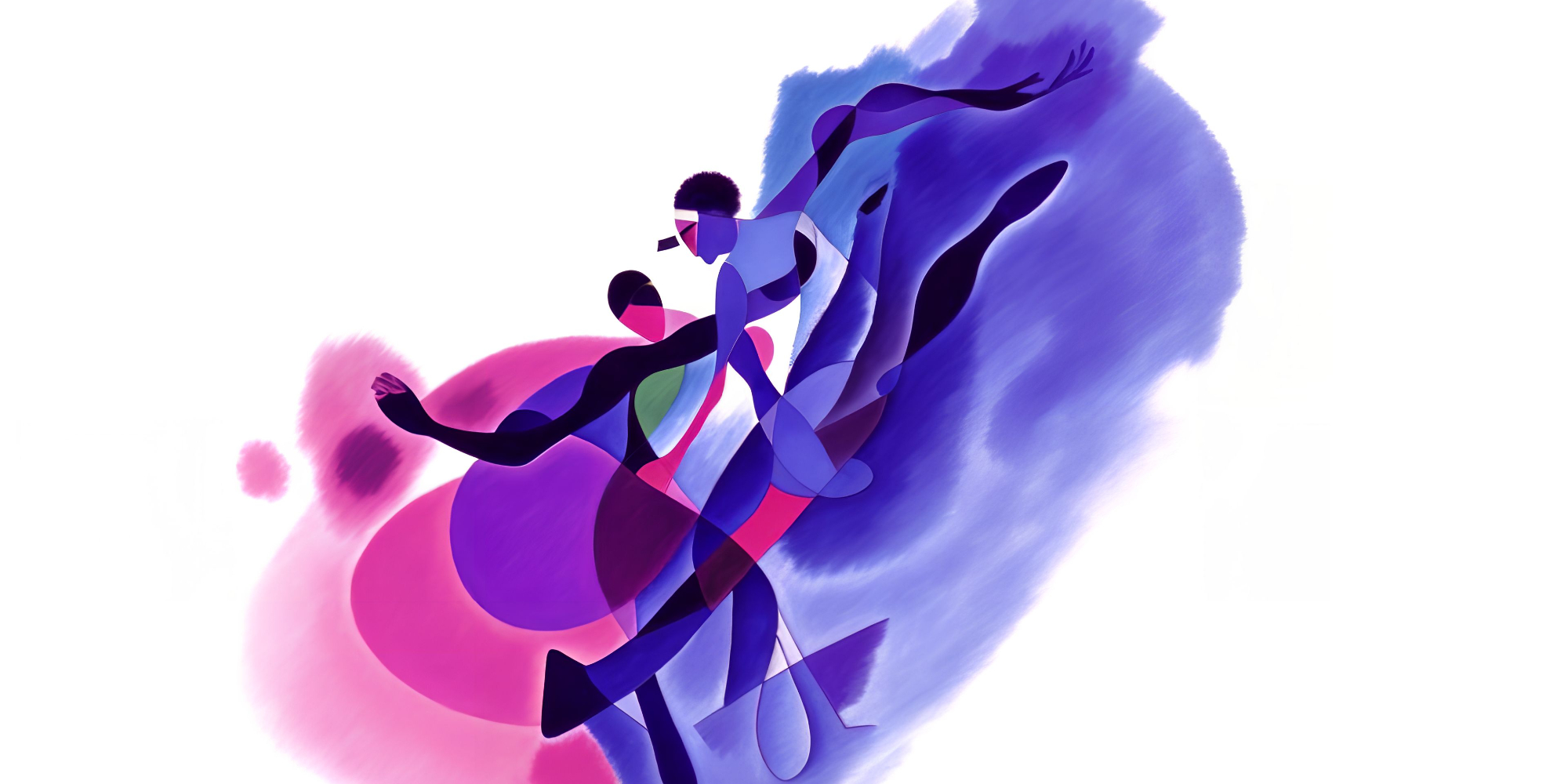by Juergen Hagler
From Computer Animation to New Animation
Computer Animation is one of the founding categories of the international competition Prix Ars Electronica. Since 1987, this category has addressed digital moving images in the context of media art. While the initial focus lay predominantly on pioneering achievements in computer graphics and animation, the jury increasingly emphasized the artistic dimension and 1992 identified three forms: commercial computer animation films, scientific visualizations, and computer art, choosing from the last mentioned for the main prize to uphold the DNA of the media art award.1
From the very beginning, the category has followed an interdisciplinary approach2 and honored innovation and excellence in the fields of computer graphics and animation, as well as visual effects. In the early 1990s, alongside tech demos—demonstrations showing the use of newly developed animation software and hardware—renowned studios were awarded for their revolutionary visual effects. Accordingly, the category’s name changed to Computer Animation / Visual Effects. In 1998, the Prix Ars Electronica awarded two Golden Nicas for the first time in its history to honor professional productions in addition to the artistic works.3
With the 20th edition of the competition, the category was renamed to Computer Animation / Film / VFX. The emergence of digital film and invisible visual effects increasingly blurred the boundaries between animation and film. To the point that digital film turned to a distinct form of animation.4
In 2020, the category removed the add-ons to respond to the increasing return to the artistic dimension over the past two decades. In addition, the emergence of new immersive technologies and forms has opened a broad artistic spectrum in animation. This development is evident in the award-winning and selected works of the last 15 years: Art games, projection mappings, VR projects, or interactive media facades extend the canon of animation art.

New Animation Art
Currently, we are experiencing a paradigm shift in how we perceive, understand, and create images. It’s not just AI and machine learning shifting the boundaries of our visual cultures, but also new methods and tools for scientific visualization, new forms of communication (social media, investigative journalism like Forensic Architecture, etc.), or advances and trends in real-time graphics (VR, MR, Metaverse, games, etc.).
The production of digital images is fundamentally changing. We can generate images with just a few inputs, or transferer animation styles to moving images based on databases. Lev Manovich points out this fundamental method in relation to AI generative media in his current book Artificial Aesthetics: A Critical Guide to AI and describes a historical development of image and moving image generation, from “creating representations manually” to “Generative AI using media datasets to predict still and moving images.”5 This results in fundamental changes.
With the category New Animation Art, Ars Electronica responds to this paradigm shift and addresses works that explore and experiment with the visual expression at the interface of animation, art, and technology. The category focuses on topics such as experimental, artistic animation, AI-generated images, generative art, scientific simulations, real-time graphics, and expanded animation as well as interdisciplinary interfaces such as theater, architecture, or computer game. The range extends from artistic expressions and creative prototypes to sociopolitical statements and impacts on our lives.
Considering the evolution of the category, the current adaption is a response to recent years, a reaction to current developments, and a sign of future trends. Whether artificial intelligence and machine learning will result in a similar paradigm shift for animation as the establishment of the computer remains to be seen. In the spirit of McLuhan’s Laws of Media6, answers to the following questions are crucial: How does AI improve animation? What type of animation does AI make obsolete? What does AI bring back in the context of animation? And what does AI cause when it is overdone to its extremes? Many effects are already visible. The category New Animation Art will continue to be a trend barometer for animation art, looking at the interactions between technology, art, and society and future developments.

However, animation is not only an essential category of the Prix Ars Electronica but also represented in various program features at the Festival.
Expanded Animation 2023 – The Art of Performance
Performance is a word that evokes a multitude of interpretations. In the simplest terms, performance describes the act of executing a task or function, but it also encompasses the staging and presentation of the act itself. As a form of artistic expression, such an act can be a play, a piece of music, a dance choreography, or a live animation. In contrast to animated films, performative acts are typically unique and, though they can be repeated, each differs in some way. Immediacy and unpredictability, among many other qualities, are the building blocks of performance in this context. But all animations, whether pre-recorded or live, are essentially a composition of static elements brought to life as a performative act. The eleventh edition of the Expanded Animation Symposium aims to explore and discuss the various interfaces between animation, performance, and artistic expression from multiple viewpoints.
Since 2013, the Expanded Animation Symposium has discussed the development and examined the fringe areas of digital animation.7 This year’s Expanded Animation Symposium begins with the Art & Industry panel, featuring exciting perspectives on animated shorts, virtual reality experiences, games, and interactive installations from Pedro Harres, Immerea and Hangonit Studios. In the afternoon, Canada-based media artist Miwa Matreyek, winner of the Golden Nica in the Prix category Computer Animation in 2020, and Japanese artist Akiko Nakayama will present and discuss their works, spanning from live drawing to merging live performance, sculpture, and animation. Helen Starr, one of the jury members of the new category New Animation Art, will tackle the theoretical context in line with these artistic positions. This will be followed by a talk about counter-gaming and artistic performance in video arts from media theorist and game scholar Stephan Schwingeler. Artist collective gold extra will also offer their insights into creative processes – from metaverse experiences to digital theater. Finally, the first day will conclude with the introduction of ANIMA PLUS, a new Linz-based organization with the aim of supporting animation art and culture in Upper Austria and beyond.
The second day of the symposium continues with artist presentations, starting with the ASIFA Austria Forum featuring Tobias Trebeljahr, Fanni Fazakas, and Kris Hofmann, followed by the Prix Forum for New Animation Art. Nora O’ Murchú, also a jury member in the new category, will engage in a discussion with Helen Starr about current artistic positions, which will be joined by the first Golden Nica winner in the new category Ayoung Kim and the two Award of Distinction winners, Bassam Issa and SANGHEE. The last panel of the second day is again dedicated to the theme of the art of performance. Rebecca Merlic will introduce and discuss her works, in particular the experimental game GLITCHBODIES, awarded with an Honorary Mention. Artist collective minus.eins and Lucy Hammond and Dirk Neldner, both actively involved in the EU-funded project PlayOn! New Storytelling with Immersive Technologies, will delve further into the possibilities of digital theater and offer insights from their current research. On the third and final day, the fourth edition of Synaesthetic Syntax The Ghost vs the Machine will feature several perspectives on haptic bodies, agency, liveness and procedurality in the context of performance.

Synaesthesia is a condition in which the senses are cross-wired in a counter-intuitive feedback loop where the synaesthete may hear a sound but see a colour. The computer can be seen as the ultimate synaesthetic machine: through digital processes, we can code inputs from all of the different senses, reduce them to binary data and cross-wire them. As humans our senses of proprioception (detecting our own position in space) and the vestibular system (detecting gravity, movement, and balance) allow us to map our surroundings, navigate through space and detect the proximity of others. In an age in which our city streets have become a film studio with our every movement tracked by surveillance cameras and our every thought, memory, or social interaction mediated through the camera, GPS, microphone, and motion sensors of our smart devices, what does it mean to have a body? In what ways can expanded animation explore the physical presence of the live human body in motion, and what is the role of technology in relation to this?
This year’s presenters will showcase cutting-edge projects in dance with augmented reality and exoskeletons, mocap, digital puppets, procedural animation, haptic VR, gaze tracking and AI-driven experiences, and much more. Issues covered will include liveness, improvisation, participation, spontaneity, unpredictability, presence, and agency – closing with a keynote from Ghislaine Boddington, a curator, presenter, and researcher, known for her pioneering work placing the body as the interface for digital technologies and exploring telepresence, digital intimacy, and virtual physical blending since the early 1990s.
Expanded Animation is produced as a joint collaboration by the University of Applied Sciences Upper Austria, Hagenberg Campus and the Ars Electronica Festival in cooperation with the University for the Creative Arts, Farnham, UK, and organized by Jeremiah Diephuis, Juergen Hagler, Wolfgang Hochleitner, Michael Lankes, Patrick Proier, Christoph Schaufler, Alexander Wilhelm / Upper Austria University of Applied Sciences Hagenberg Campus / Department of Digital Media, Birgitta Hosea Animation Research Centre, University for the Creative Arts, Farnham, UK and Reinhold Bidner, ASIFA Austria.
The mentioned programs form an important part of the Ars Electronica Festival 2023 and can be visited in the course of it. The festival highlights can be found here.

Juergen Hagler currently works as a professor for Computer Animation and Animation Studies in the Digital Media department at the Hagenberg Campus of the University of Applied Sciences Upper Austria. He became the programme coordinator for the Digital Arts master’s degree programme in 2009. Since 2014 he is the head of the research group Playful Interactive Environments with a focus on the investigation of new and natural playful forms of interaction and the use of playful mechanisms to encourage specific behavioral patterns. Since 2017 he is the director of the Ars Electronica Animation Festival and initiator and organizer of the symposium Expanded Animation.
1 Weibel, P. (1992) Begründung der Jury. In Der Prix Ars Electronica Edition ´92. Edited by Leopoldseder, H., VERITAS-Verlag, p. 43.
2 Schöpf, C. (1995) Prix Ars Electronica 95. In Prix Ars Electronica – Internationales Kompendium der Computerkünste – World Wide Web Sites, Interaktive Kunst, Computeranimation, Computermusik – Edition 95. Edited by Leopoldseder, Hannes/Schöpf, C., Landesstudio Oberösterreich, p. 13.
3 Robertson, B. (1998). Looking into the Future, In: Cyberarts 98, Edited by Hannes Leopoldseder; Christine Schöpf, Springer, pp. 110–115
4 Manovich, L. (2002). The language of new media. MIT Press, p. 255
5 Manovich, L., & Arielli, E. (2023). Artificial Aesthetics: A Critical Guide to AI. Media and Design.
6 McLuhan, M. (1975). McLuhan‘s Laws of the Media. Technology and culture, 16(1), 74¬—78.
7 Hagler, J., Lankes, M., & Wilhelm, A. (Eds.). (2019). Expanded Animation: Mapping an Unlimited Landscape. Hatje Cantz.
